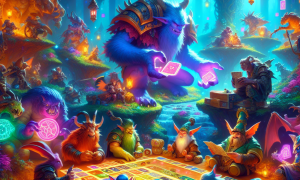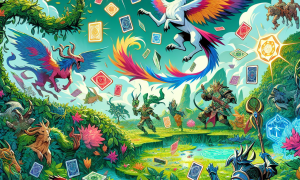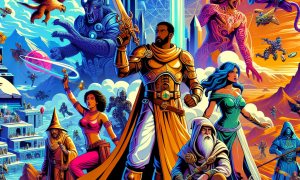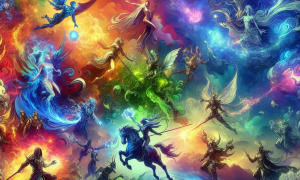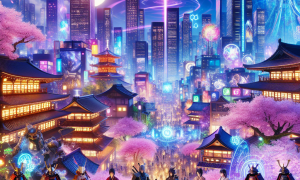Multicolor Partners in MTG: Why Design Lead Regrets Them
The world of Magic: The Gathering (MTG) is ever-evolving, with new mechanics and designs shaping the way players engage with the game. Among these innovations, the concept of multicolor partners has sparked both excitement and controversy. In a recent statement, MTG’s lead designer voiced regrets about the inclusion of multicolor partners, opening the floor for discussions about their impact on gameplay, balance, and the community as a whole.
Understanding Multicolor Partners
Before diving into the reasons behind the design lead’s concerns, it’s essential to unpack what multicolor partners are. Introduced in the *Commander 2016* set, partners allow players to pair two commanders together, enabling them to access a wider array of colors and strategies. Each partner card has unique abilities and synergies, giving players more freedom in deck-building and enhancing the diversity of gameplay experiences.
**Drawbacks of Multicolor Partners**
While the introduction of multicolor partners enriched the game in many ways, they also presented challenges that have led to mixed reactions among the player base:
- Complexity in Design: Designing partners inherently increases complexity. With the combination of multiple colors, the potential card interactions multiply exponentially, leading to a steep learning curve for newer players.
- Balancing Issues: The more colors a player has access to, the more powerful their strategies can become. This can lead to less balanced games, where certain combinations dominate the meta.
- Potential Confusion: New players may find it confusing to navigate the multitude of options when facing multicolor partners, detracting from the overall enjoyment of the game.
- Commander Cohesion: The ability to choose from various colors can dilute the thematic cohesion often found in Commander decks, making them feel less unique and thematic over time.
The Regrets of MTG’s Design Lead
In a candid reflection, the design lead associated with MTG has acknowledged a sense of regret regarding the implementation of multicolor partners. The response has been multifaceted, focusing on the broader implications for the game’s design philosophy and player experience.
1. Overshadowing Single-Color Commanders
One significant concern is that the introduction of multicolor partners has overshadowed single-color commanders. Players often gravitate toward the versatility offered by multicolor partners, leading to a decline in the popularity of single-color strategies. This shift contributes to an unbalanced environment where the gaming experience becomes less varied, and single-color commanders feel neglected.
2. Encouraging Overly Powerful Strategies
The accessibility of multiple colors allows players to optimize their decks with the best cards from each color, often resulting in strategies that are too powerful. This power creep can create a frustrating experience for opponents, as they might feel outmatched before the match even begins.
3. Lack of Design Constraints
While creativity is vital in game design, the absence of constraints can lead to a disjointed gaming experience. Multicolor partners have blurred the lines of strategic deck construction, where the guidelines that typically govern monocolored builds may not apply. This could lead to decks that are not only powerful but also difficult to predict, undermining the enjoyment of strategic play.
The Future of Multicolor in MTG
Despite the concerns surrounding multicolor partners, they continue to play a significant role in the evolution of MTG. Both players and designers are encouraged to consider the following aspects moving forward:
1. Re-evaluating Design Philosophy
As the game progresses, MTG’s design leads have an opportunity to re-evaluate their approach to multicolor design, balancing the excitement of diversity with the need for coherent gameplay mechanics. They could explore innovative ways to introduce constraints that maintain the excitement of multicolor gameplay while ensuring a balanced and rewarding experience for all players.
2. Enhancing Single-Color Strategies
Developing more compelling and viable single-color commanders could counterbalance the popularity of multicolor partners. Focusing on unique abilities or mechanics that apply to single-color strategies can help regain some of the attention that these commanders have lost.
3. Building Player Communities
Engaging with the community and gathering feedback about their experiences with multicolor partners could inform future designs. Making sure players feel heard can enhance their attachment to the game and lead to innovative design solutions that resonate more with the target audience.
Conclusion
While multicolor partners undoubtedly brought excitement and diversity to MTG, they also introduced complexities that have sparked regret among the game’s design leadership. By acknowledging these challenges, and by working to restore balance and coherence to game design and the player experience, MTG has an opportunity to evolve sustainably.
As players, we can engage in this conversation, sharing our thoughts and experiences related to multicolor partners. By doing so, we contribute to shaping the future of our beloved game, ensuring that it remains fun, engaging, and balanced for everyone involved. The future of Magic: The Gathering relies not only on courageous design decisions but also on the values and sentiments shared by its vibrant community.
Citation: MTG Head Designer Claims Multicolor Partners Were a Mistake written by MTG Rocks

